Understanding IP Ratings for Surveillance Cameras: A Comprehensive Guide
In the world of surveillance systems, understanding IP ratings is paramount for ensuring optimal performance and longevity of your cameras. IP (Ingress Protection) ratings indicate a device’s ability to withstand various environmental conditions, such as dust, water, and impact. For surveillance cameras, these ratings play a crucial role in determining where they can be safely installed and how well they will function under different circumstances. In this comprehensive guide, we will delve into the intricacies of IP ratings for surveillance cameras, providing you with the knowledge needed to make informed decisions when selecting and deploying these essential security devices. Whether you are a seasoned professional or a novice in the realm of video monitoring technology, this article aims to equip you with valuable insights on how to effectively evaluate and leverage IP ratings for superior surveillance camera performance.
Understanding IP Ratings: An Overview
IP ratings, or Ingress Protection ratings, are a standardized system used to classify the level of protection provided by an electronic device against solid objects and liquids. The first digit in an IP rating refers to the protection against solid objects such as dust, while the second digit indicates resistance to liquids like water.
For surveillance cameras, a higher IP rating signifies greater protection against environmental factors. Cameras with an IP66 rating can withstand powerful jets of water and heavy dust exposure, making them ideal for outdoor use in harsh weather conditions. On the other hand, cameras with a lower IP rating may not be suitable for outdoor installation due to their limited protection against moisture and debris.
Decoding the IP Rating System
- The IP rating system is a standard used to define how well a device, such as a surveillance camera, is protected against solids and liquids.
- An IP rating consists of two numbers: the first number indicates protection against solids like dust, while the second number shows protection against liquids like water.
- A higher IP rating means better protection. For example, an IP68-rated camera offers complete dust protection and can be submerged underwater.
In summary, understanding the IP ratings of surveillance cameras is crucial for ensuring they are suitable for your specific environment’s conditions. By decoding the IP rating system and knowing what each number represents, you can make an informed decision when choosing a surveillance camera that will withstand outdoor elements or harsh indoor conditions. So next time you’re shopping for CCTV cameras or security systems, pay close attention to their IP ratings to ensure reliable performance in any situation.
IP Rating Standards for Surveillance Cameras
- Ingress Protection (IP) ratings indicate a surveillance camera’s ability to withstand environmental factors such as dust, water, and impact.
- The first digit in the IP rating represents protection against solid objects like dust, with 0 being no protection and 6 providing complete protection.
- The second digit signifies resistance to liquids, ranging from 1 for light splashes to 8 for continuous immersion.
Surveillance cameras with higher IP ratings are more durable and suitable for outdoor use. When choosing a camera, consider the specific environmental conditions it will be exposed to and select an appropriate IP rating accordingly. Understanding these standards ensures your surveillance system will function effectively in any setting.
Importance of IP Ratings for Outdoor Cameras
- Protection Against Elements: IP ratings indicate the level of protection a surveillance camera has against dust, water, and other outdoor elements. For outdoor cameras exposed to harsh weather conditions, a high IP rating is crucial to ensure longevity and reliability.
- Durability and Longevity: A higher IP rating typically means better durability and longevity for outdoor cameras. Investing in an outdoor camera with a sufficient IP rating can save you money in the long run by reducing the need for frequent replacements or repairs due to damage from exposure to external factors.
- Peace of Mind: Knowing that your outdoor surveillance camera has a high IP rating can give you peace of mind that it is built to withstand various environmental challenges. This sense of security allows you to rely on your camera for continuous monitoring without worrying about its performance being compromised by external factors.
Water Resistance and IP Ratings
- Water resistance: The IP rating of a surveillance camera indicates its level of protection against water ingress. This is crucial for outdoor cameras that are exposed to the elements.
- Understanding IP ratings: The first digit in an IP rating refers to the camera’s protection against solid objects, while the second digit pertains to its water resistance.
- Importance of water resistance: A higher second digit in an IP rating means better protection against moisture, ensuring your surveillance camera can withstand various weather conditions.
Dust Resistance and IP Ratings
- Dust Resistance: When it comes to surveillance cameras, dust resistance is crucial for outdoor installations. Cameras with higher levels of dust protection ensure that the device remains operational in dusty environments without compromising image quality.
- IP Ratings: The Ingress Protection (IP) rating system classifies a camera’s level of protection against particles like dust and water. The first digit in an IP rating indicates the degree of protection from solid objects such as dust, with higher numbers representing better defense against ingress.
- It is important to look for cameras with IP ratings specifically designed for dust resistance if you plan on installing them in dusty areas. Investing in a camera with a high IP rating will help maintain optimal performance even in harsh environmental conditions where exposure to dust is unavoidable.
Impact Protection and IP Ratings
Surveillance cameras with higher Ingress Protection (IP) ratings provide better protection against impact damage. The first digit in the IP rating indicates the level of protection against solid objects, while the second digit relates to protection against liquids. For example, a camera rated as IP67 offers complete dust protection (6) and can withstand immersion in water up to 1 meter deep for 30 minutes (7).
Investing in surveillance cameras with higher IP ratings ensures durability and longevity, especially in harsh outdoor environments where impacts are more likely. Cameras with lower ratings may be more susceptible to damage from accidents or vandalism. Prioritizing impact protection through IP ratings can contribute to cost savings by reducing the need for frequent repairs or replacements due to physical damage.
In conclusion, understanding how IP ratings relate to impact protection is crucial when selecting surveillance cameras for different applications. Higher-rated cameras offer superior resistance against impacts, ensuring reliable performance even in challenging conditions. By considering IP ratings alongside other important features such as resolution and night vision capabilities, users can choose surveillance cameras that meet their specific needs while providing long-term reliability and peace of mind.
Choosing the Right IP Rating for Your Surveillance Cameras
When selecting an IP rating for your surveillance cameras, consider the level of protection needed. IP66: Provides dust-tight protection and resistance to powerful jets of water—ideal for outdoor use. IP67: Offers total dust ingress protection and can withstand temporary immersion in water up to 1 meter. Choose a higher rating for harsher environments.
It’s crucial to match the IP rating with the camera’s intended placement. Determine if the camera will be exposed to extreme weather conditions or potential vandalism. Properly assessing these factors ensures long-term functionality and durability of your surveillance system.
Remember that a higher IP rating translates to better protection but may come at a higher cost. Balance your needs with budget considerations when deciding on the right IP rating for your surveillance cameras.





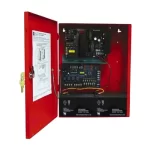

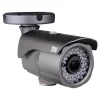
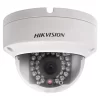
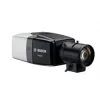
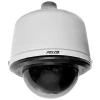


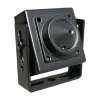
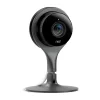
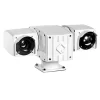
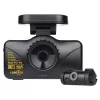
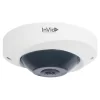




No comment